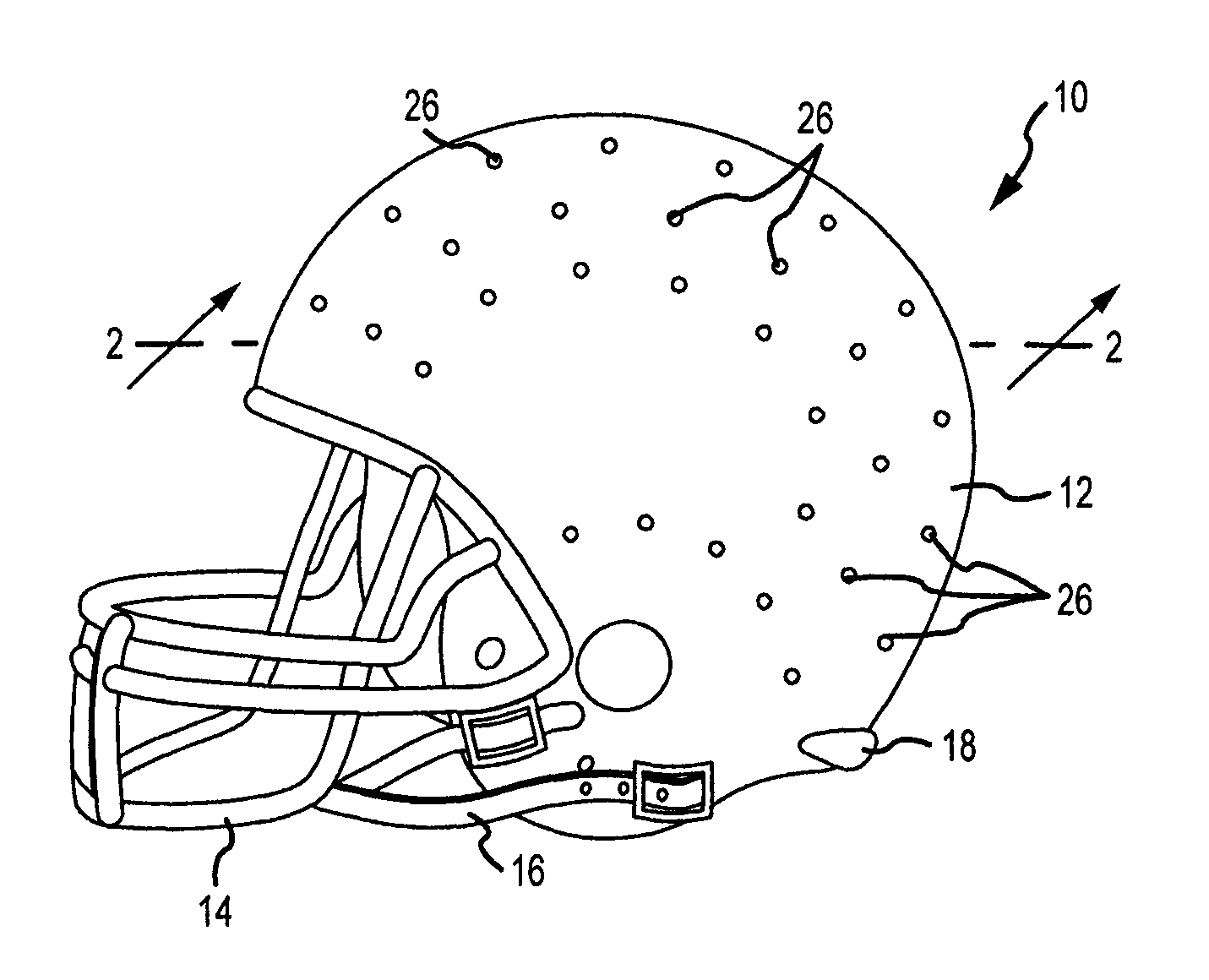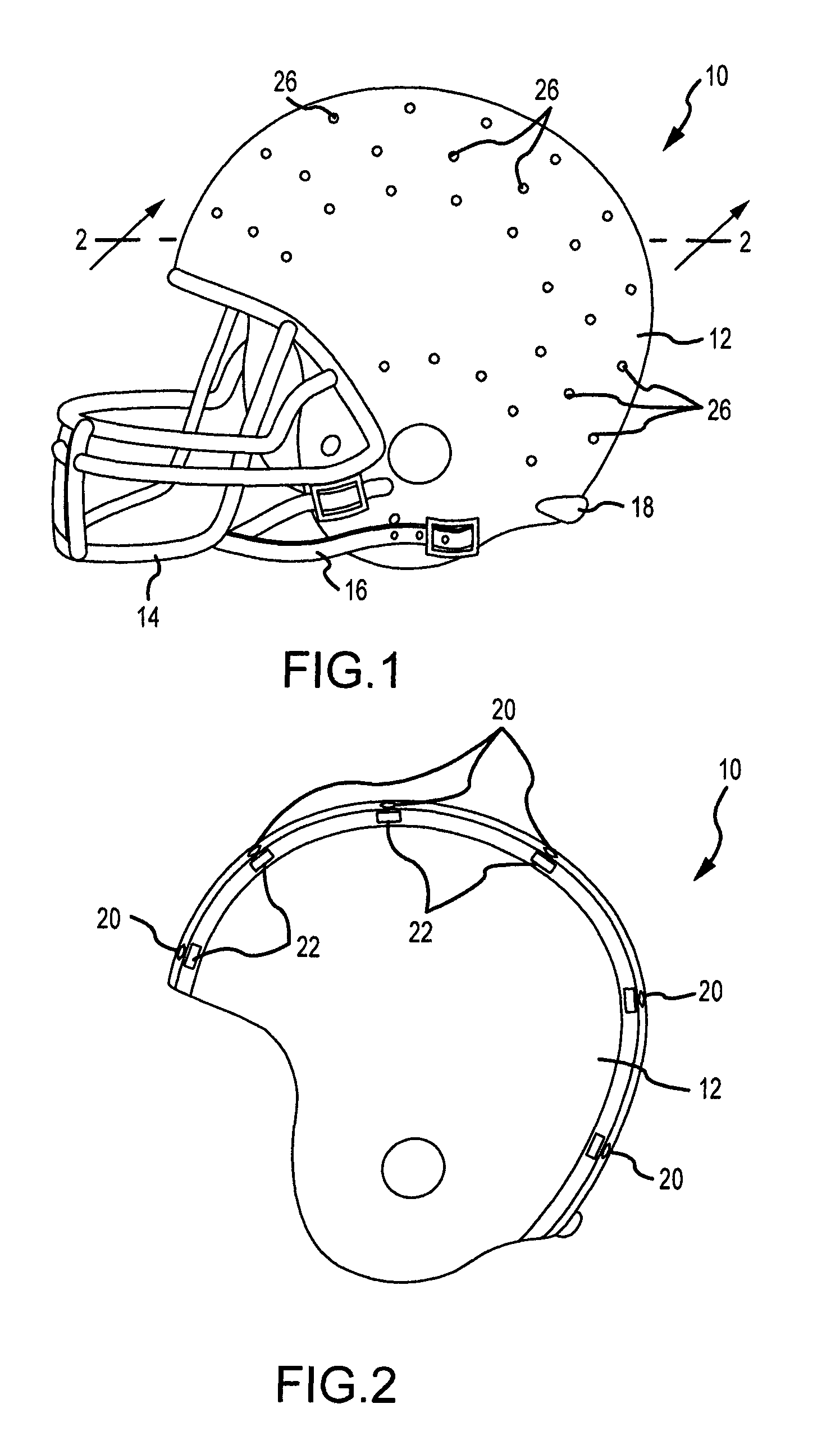Protective helmet having a microprocessor controlled response to impact
a protective helmet and microprocessor technology, applied in the field of protective helmets, can solve problems such as surface area change, and achieve the effect of preventing the brain from hitting the skull, softening or slowing such impa
- Summary
- Abstract
- Description
- Claims
- Application Information
AI Technical Summary
Benefits of technology
Problems solved by technology
Method used
Image
Examples
Embodiment Construction
[0030]FIG. 1 shows a helmet 10. The helmet 10 is a gridiron football (football) helmet including a shell 12, a mask 14 mounted on the shell 12, and a chin strap 16 for holding the helmet 10 on the head of a user. The shell 12 includes a plurality of vents 26 to enable compressed fluid to be expressed through the shell 12.
[0031]The helmet 10 includes a fluid reservoir 18 mounted on a rear portion of the helmet 10 opposing the location of the mask 14. Positioning the fluid reservoir 18 in a position opposing the mask 14 reduces the likelihood of impact directly against the reservoir 18. The reservoir 18 is refillable.
[0032]FIG. 2 shows a cross-section of the helmet 10 as seen along the line 2-2 in FIG. 1 as seen in the direction of the arrows. The shell 12 includes an array of strain gauges 20 and an array of cells 22 mounted an inner surface of the shell 12. The array of strain gauges 20 and the array of cells 22 mount on the inner surface of the shell 12 to enable rapid replacement ...
PUM
 Login to View More
Login to View More Abstract
Description
Claims
Application Information
 Login to View More
Login to View More - R&D
- Intellectual Property
- Life Sciences
- Materials
- Tech Scout
- Unparalleled Data Quality
- Higher Quality Content
- 60% Fewer Hallucinations
Browse by: Latest US Patents, China's latest patents, Technical Efficacy Thesaurus, Application Domain, Technology Topic, Popular Technical Reports.
© 2025 PatSnap. All rights reserved.Legal|Privacy policy|Modern Slavery Act Transparency Statement|Sitemap|About US| Contact US: help@patsnap.com



